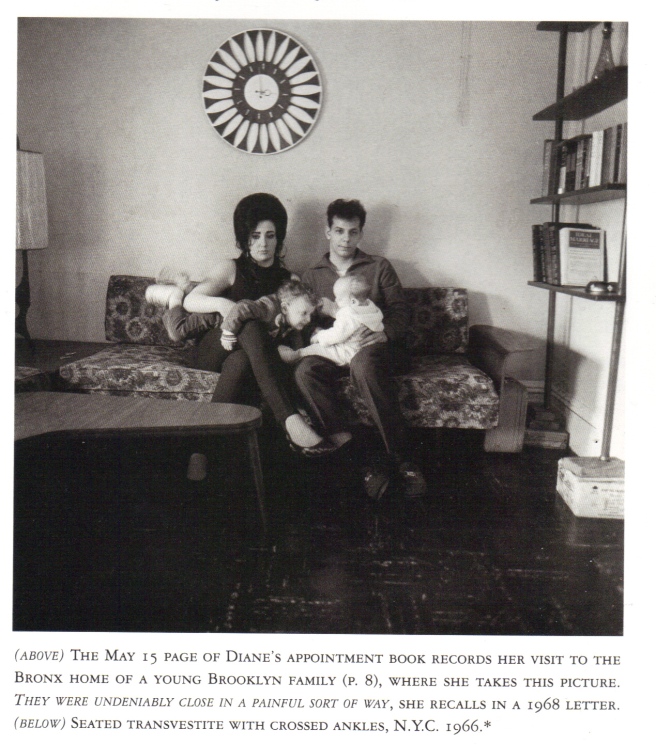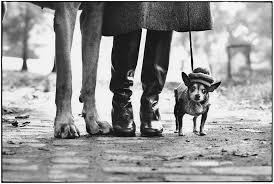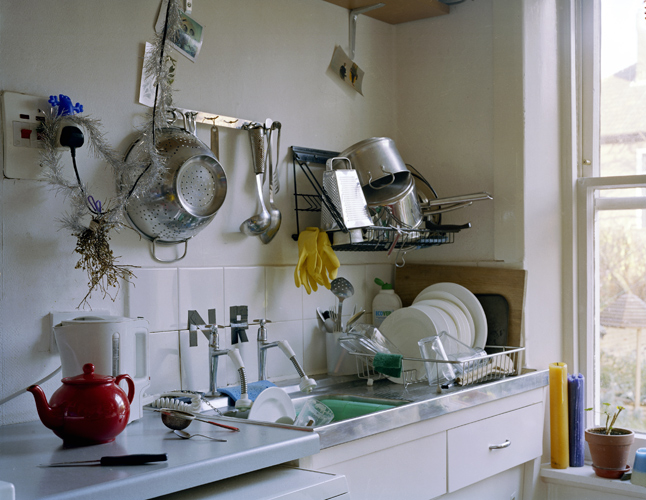 Jeff Wall’s , Insomnia (1994)
Jeff Wall’s , Insomnia (1994)
I found it useful to read Sharon’s blog on the OCA in relation to Jeff Walls Insomnia image. I would not have considered the wider context of art, literature and film , I will try to consider this when completing my assignment and look beyond the digital image to the printed image as this also provides information by the way it is presented.
He is what I understand / see so far:
Denotation – What we can see in the image.
I see a kitchen (Deduced by the cooker, sink, fridge, table and units. I see a man laying on the floor under the table. A window with a reflected light.
Connotation – What we interpret about the image, what might it mean.
I see a cold kitchen, there are no signs of warmth or family. The lighting is harsh, the reflection in the windows suggests it is night-time and there is no view. The image feels sinister and ‘dark’. It is unsettling.
Studium – Cultural, political or social meaning.
Here is where I struggle a little but the title explains that the image relates to insomnia, the kitchen looks sparse, perhaps the insomnia has affected his social standing in life. Considering the image is dated 1994 the kitchen looks dated therefore I place the man in the stereotype of lower / working class.
Punctum – Disruptive element to the image which can change the interpretation of the image. Here is where I get a little lost? I am presuming that the punctum is the man laying on the floor.
Jeff Wall’s image Insomnia draws my eyes around the image. I find i look initially to the table , then across the turquoise cabinets to the paper bag on the fridge until finally they rest on the man laying under the table. Every area of the frame is filled with visual clues and information, each time I look I see more than before. The image follows the golden ratio in compostion but is equally divided into thirds horizontally by the floor, the table and the window.
In the foreground is a table which appears to belong to a couple maybe? There are two chairs. The chairs are not matching and one is turned away from the other, could this be symbolic of the relationship? On the table there is a single salt shaker and an ashtray which appears unused. I am left to presume that it is the partner that smokes otherwise I would expect to see stubs left by the insomniac man.
Following across the image is a large old cooker with a small solitary saucepan on top, on the wall above the cooker is a circular mark / stain left by an old wall hanging. A clock I presume, another clue to direct us to his insomnia, Whenever I have been unable to sleep I constantly clock watch to see how much time has elaspsed , perhaps this is what this relates to?
In the background we see very dated turquoise kitchen units, a larder cupboard and small cupboard are left ajar. Was he looking for snacks? Making a drink? Or perhaps he was looking for medicines to help him sleep? The coffee pot on the counter below is empty, Coffee would not help him sleep! The sink appears full as does the draining board. The window above the sink shows the reflection of the stark flourescent light, You can see it is night-time, another clue, there is a fence beyond the window. The room appears walled in, trapped by the fence.. more suggestions.
Looking right there is the fridge on which the paper bag sits, did he pop out to visit a drug store to get something to help him sleep? Did he get food?
Then we look to the man on the floor, he is almost laying a fetal position, actually more of a recovery position. His eyes are open and he looks uncomfortable. His head does not appear to be touching the cushion he is holding under himself, in fact is it a cushion?
Perhaps the title has misled me along with the clues? If I could image this were a bag of frozen peas taken from the freezer held under him , the paper bag held a bottle of liquor from the store then I could image a fight, a tiff, a quarrel. The chairs facing in opposite directions, the missing coffee pot meant to sober him up. Did the partner hide in the cupboard? What could they have fought over?
Without the aid of the title I can see two different narrations to this image.
The image feels very dark and sinister, it reminds me a little of Gregory Crewdsons work in that I find myself looking around the image finding clues to help me build a story.


 Jeff Wall’s , Insomnia (1994)
Jeff Wall’s , Insomnia (1994)



